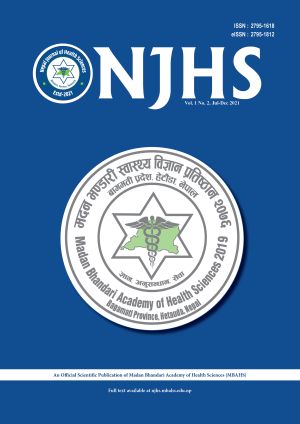Metabolic Pathways and Pathological Outcomes of Aflatoxins: A Review
DOI:
https://doi.org/10.3126/njhs.v1i2.42385Keywords:
Aflatoxins; aflatoxinB1; carcinogens; fungal toxins.Abstract
Aflatoxin is a secondary fungal metabolite that contaminates foods, mostly staple diets like maize, peanuts, chillies, and even rice. These foods are also a major constituent of weaning food for infants in Asia and Sub-Saharan Africa. The fungal metabolite contaminates food during production, harvest, storage, and processing. The contamination is largely promoted by genotypes of crops, soil conditions, temperate regions, and insect activity. Once ingested into the body, aflatoxins get metabolized into different hydroxylated derivatives such as AFb1, AfM1, AFP1, aflatoxicol, and Aflatoxin B1. AFB1 is the most carcinogenic and potent of the known metabolites and they have been categorized as Group I carcinogenic agents by the International Agency for Research on Cancer. The toxic metabolites of aflatoxins have been found in blood samples, breast milk and also have been shown to traverse the placental route. Through various metabolic pathways aflatoxins are responsible for different types of pathological outcomes like gut enteropathy, anemia, stunting, and other immunological disorders. Moreover, socioeconomic determinants have indirectly shown to be strong predictors of aflatoxins exposure and thus its related pathological outcomes. Since we have a very limited number of researches about aflatoxins, this review altogether puts forward what is known about the toxin and its harmful metabolites.
Keywords: Aflatoxins; aflatoxinB1; carcinogens; fungal toxins.
Downloads
Downloads
Published
How to Cite
Issue
Section
License
Copyright (c) 2021 Aashma Dahal, Ashish Lamichhane, Alina Karna

This work is licensed under a Creative Commons Attribution 4.0 International License.




